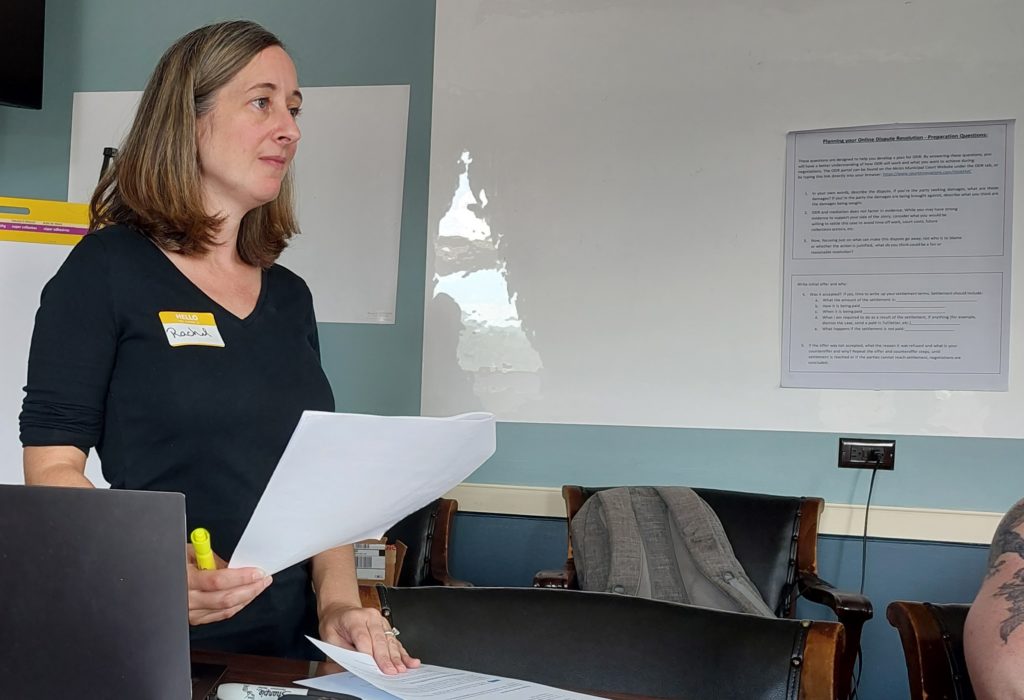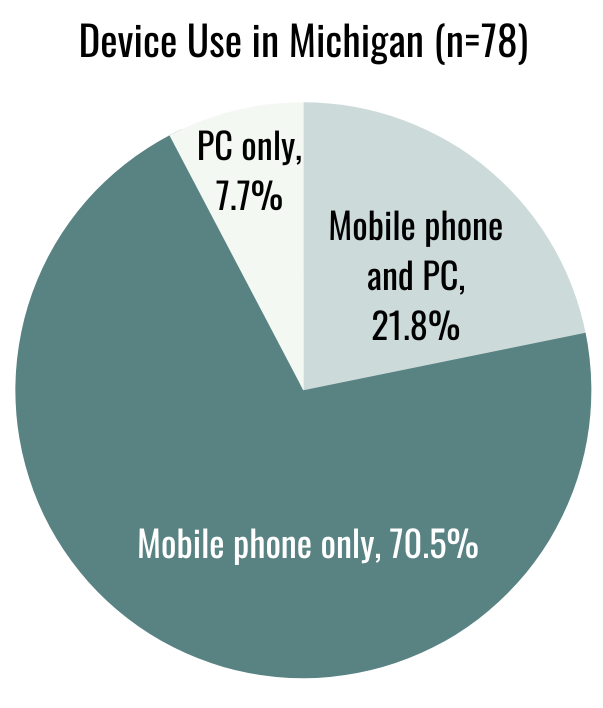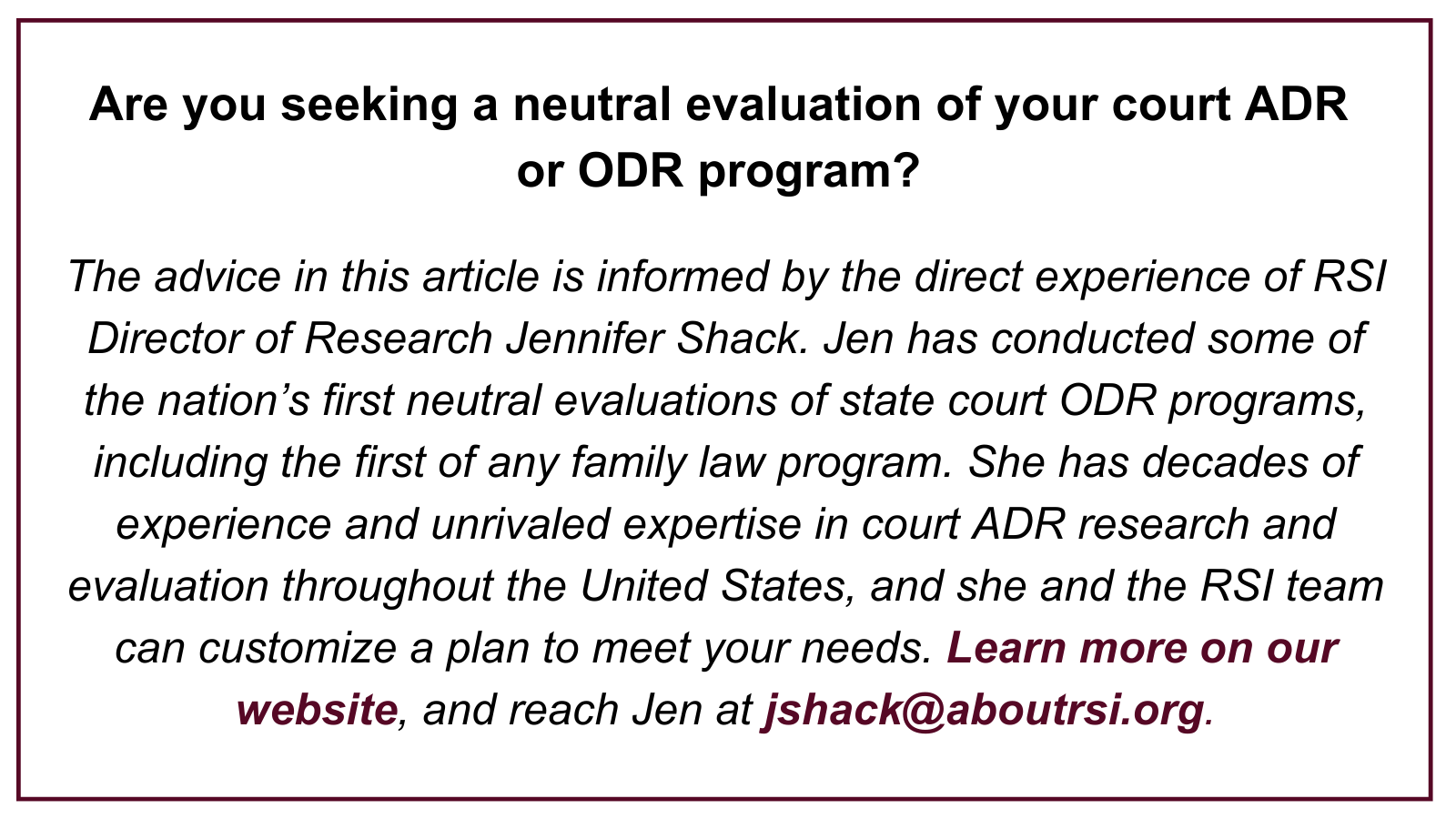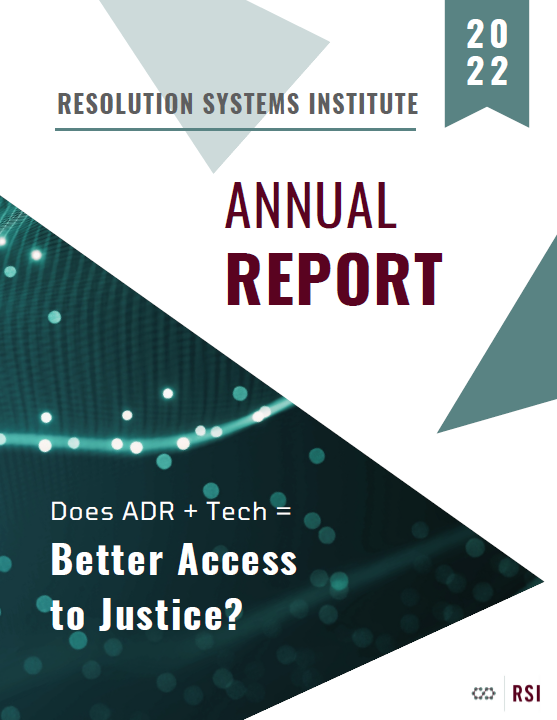In 2022, RSI and the University of California, Davis, published two evaluations of court-related online dispute resolution (ODR) programs. A main finding of those evaluations was that parties did not have sufficient information about the programs they were being required to use. We went on to look at programs in other courts and found that the information available to parties about ODR varied, and that courts, despite making significant efforts to provide this information, needed help to do so. This was especially true for communicating with self-represented litigants. Our findings have led RSI to conduct new research that will result in a guide for courts that need to communicate with parties about their ODR programs.
The Case for Accessible Court Communications

Across the US, 72% of family law cases and 76% of civil cases involve at least one self-represented litigant. As more people are handling civil cases without a lawyer, it is increasingly important that everyone can understand and use court communications, regardless of their educational background. Accessible court communications can reduce default rates and increase access to court services and programs, including ODR programs.
Half of the adult population in the US struggles to read lengthy, dense texts to complete tasks and accurately answer questions. Developing court resources with this in mind can significantly improve people’s understanding of how to access court resources, and can increase participation rates in various programs. One recent study found that simplifying the text used in court forms improved participants’ understanding of the purpose of a subpoena from 23% to 70%. Studies have also found important patterns in the reading styles and strategies of people who have low literacy, such as avoiding dense blocks of text and ignoring information on the left and right sides of the web page. Effective court communications take these types of reading patterns into account.
Digital Literacy is Another Challenge
But language and writing styles are not the only issues. Many people rely on websites and online resources provided by courts to gather the information they need, provide information to courts, and participate in online court programs. Despite widespread use of the internet, a large percentage of US adults struggle with digital literacy, or the ability to use digital technology to find information, complete tasks or communicate.
When designing websites or other digital resources, courts can benefit from recognizing common patterns among people who have low digital literacy skills. For example, people with low digital literacy will often avoid the use of search boxes, opting instead to link surf. And it is common to satisfice quickly, or give up before finding necessary information. In RSI’s forthcoming guide for courts, we will provide more information about reading patterns and strategies common among people with low literacy and low digital literacy, with the aim of supporting courts in developing ODR material everyone can use.
Helping ODR Serve More Parties
The movement to use accessible court communications helps both parties and the courts. For example, civil courts throughout the country are investing in ODR programs. Many people can benefit from the convenience, lower cost and less intimidating process of resolving conflicts online. However, ODR participation rates remain very low, even when it is mandatory. If self-represented litigants understand the steps they need to take, more may take part in their case and do so in a more informed manner. This, in turn, will help courts by increasing participation in ODR.
The experience of the ODR programs we evaluated provides a valuable example of the need to develop effective court communications to help parties to more easily navigate court services and to improve participation in court programs. In a typical ODR process for debt and small claims cases, the court requires that defendants be given a notice of the ODR program. This notice provides written instructions to register on a third-party platform. Once they register, they can try to resolve their case with the plaintiff before their first hearing. The defendant will likely complete the entire process without interacting with court staff. Further, ODR is unfamiliar to most people, increasing the importance of courts’ efforts with written communications — and sometimes instructional videos — to provide parties adequate information to participate in their case.
Maximizing Court Programs’ Potential
If done well, court communications can narrow the information gap and maximize the potential of a variety of court ODR programs. Enhancing access to justice requires the development of effective and accessible court communications that people from all backgrounds and education levels can easily understand and use. RSI’s ODR Party Engagement (OPEN) Project is working to support courts in this effort by conducting focus groups in three areas of the US. Through these focus groups, we will hear from a diverse group of people who have a low income and low education, to learn what works for court notices, guides, websites and instructional videos pertaining to ODR. We will use our data, along with previous research, to develop a broadly applicable guide for civil courts to use when developing communications that reduce barriers to participation in ODR for people with low literacy.
This project is generously supported by the American Arbitration Association-International Centre for Dispute Resolution Foundation.








